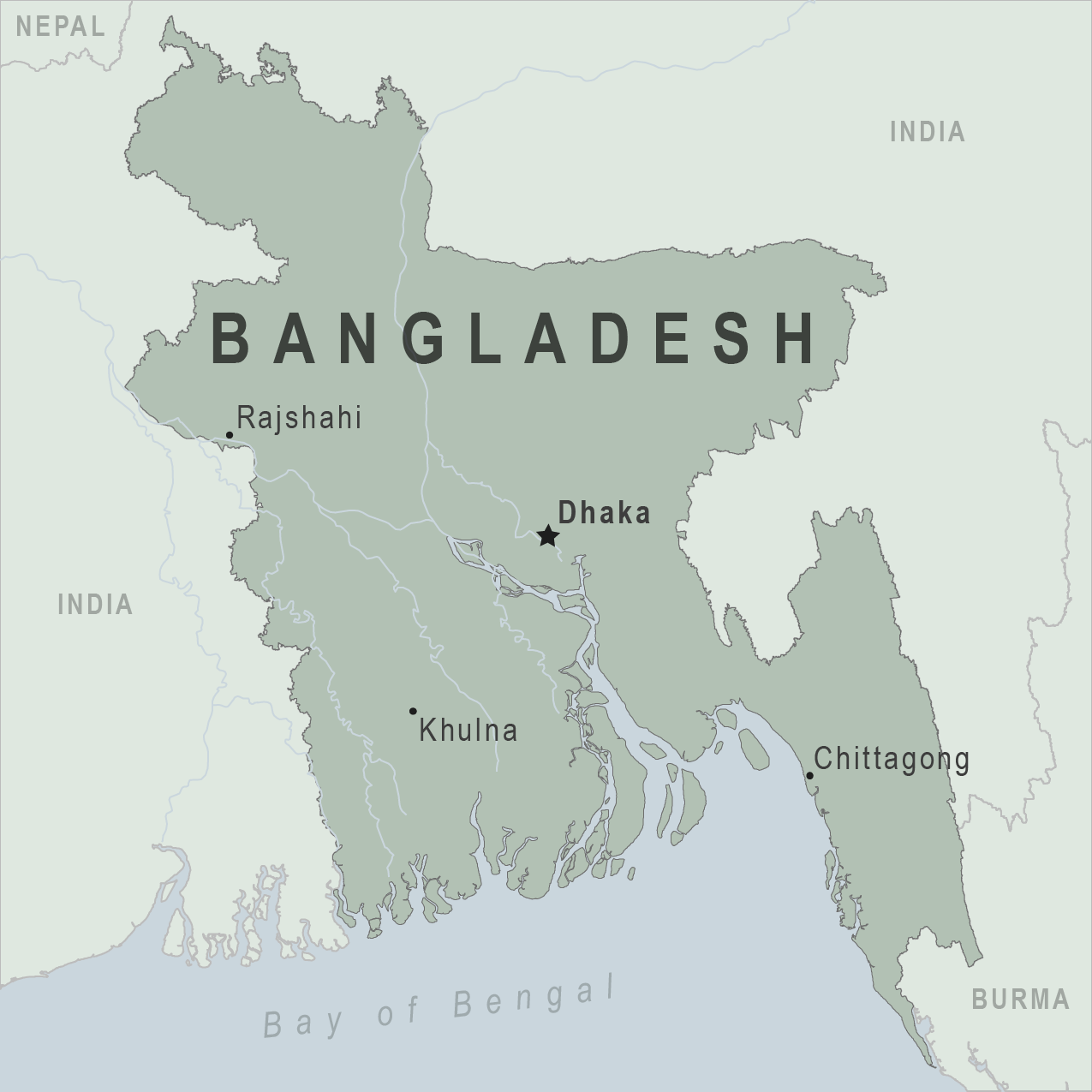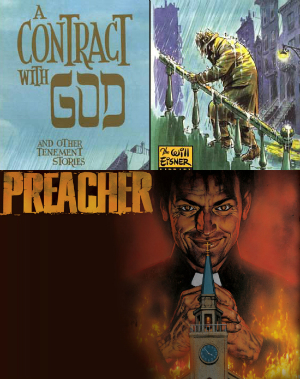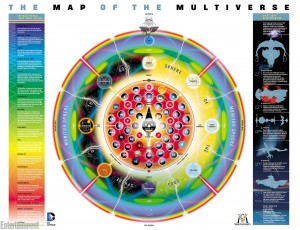 Last year, Al Jazeera noted the surprising rise of comic book culture in Bangladesh, citing the precipitous rise of both retailers conventions. (Note, in particular, the varied views reflected in the user comments following the article.) Read more here.
Last year, Al Jazeera noted the surprising rise of comic book culture in Bangladesh, citing the precipitous rise of both retailers conventions. (Note, in particular, the varied views reflected in the user comments following the article.) Read more here.
Wednesday Theology: Daring to Address God
Mitch Alfson of Wednesday Theology shared his 2012 paper from Dordt College’s The Christian Evasion of Popular Culture Conference. In it, he encourages his audience to look beyond the superhero genre for (the lack of) engagement with God, featuring Will Eisner’s A Contract with God and Garth Ennis & Steve Dillon’s Preacher in particular. Read more here.

The ISIS Terrorist Who Loves Superheroes
 Rich Johnson at Bleeding Cool noted a particularly disturbing trait to one of the ISIS terrorists: He’s apparently a superhero fan. The Guardian newspaper profiled Reyaad Khan, a Welsh jihadist and, based on his Twitter feed, a Batman and Justice League enthusiast. Shouldn’t there be something inherently contradictory between the superhero credo and ISIS’s principles? Read more here.
Rich Johnson at Bleeding Cool noted a particularly disturbing trait to one of the ISIS terrorists: He’s apparently a superhero fan. The Guardian newspaper profiled Reyaad Khan, a Welsh jihadist and, based on his Twitter feed, a Batman and Justice League enthusiast. Shouldn’t there be something inherently contradictory between the superhero credo and ISIS’s principles? Read more here.
Deicide Abounds in “God Is Dead”
Rich Johnson at Bleeding Cool provided coverage of the two-part mini-series God Is Dead: Book of Acts, a companion to Avatar Press’s main God Is Dead series created by Jonathan Hickman. In short, many, many divinities slaughter each other, with humankind in the middle (and a great deal of sex had on the way as well). And now, it’s attracted creators like Alan Moore (and his personal serpent god Glycon), Kieron Gillen, and Si Spurrier to weave mini-myths for it! Read more here.
Mapping Heaven, Hell, and Superheroes
 Readers of superhero comics have been buzzing this week about the release of Multiversity #1 from the mind of award-winning writer Grant Morrison. The new, dimension-hopping series also features a revised map of DC Comics’ storytelling universe…with some notable repercussions. As the site Multiversity Comics notes:
Readers of superhero comics have been buzzing this week about the release of Multiversity #1 from the mind of award-winning writer Grant Morrison. The new, dimension-hopping series also features a revised map of DC Comics’ storytelling universe…with some notable repercussions. As the site Multiversity Comics notes:
While the multiversal map depicts the Source Wall as existing beyond Monitor Space and the Orrery of Worlds, characters of the DC universe have often interacted with it, or at least aspects of it. What lies beyond the Source Wall isn’t entirely clear. It is often described as a void, known sometimes as the source. It is home to a omnipowerful, God-like being referred to at times as “The Presence” or “The Overvoid.” Morrison has likened this area to a blank page, upon with the stories and pictures of the DC universe are written, drawn, and told (which makes the pun of the “Source” rather clear).
In addition to this meta-approach to the God-like Source of the DC Universe, there is also the flatly plain charting of Heaven and Hell amongst all the other realms. A peculiar theology seems to be underpinning Morrison’s outlook on the company’s fiction…




